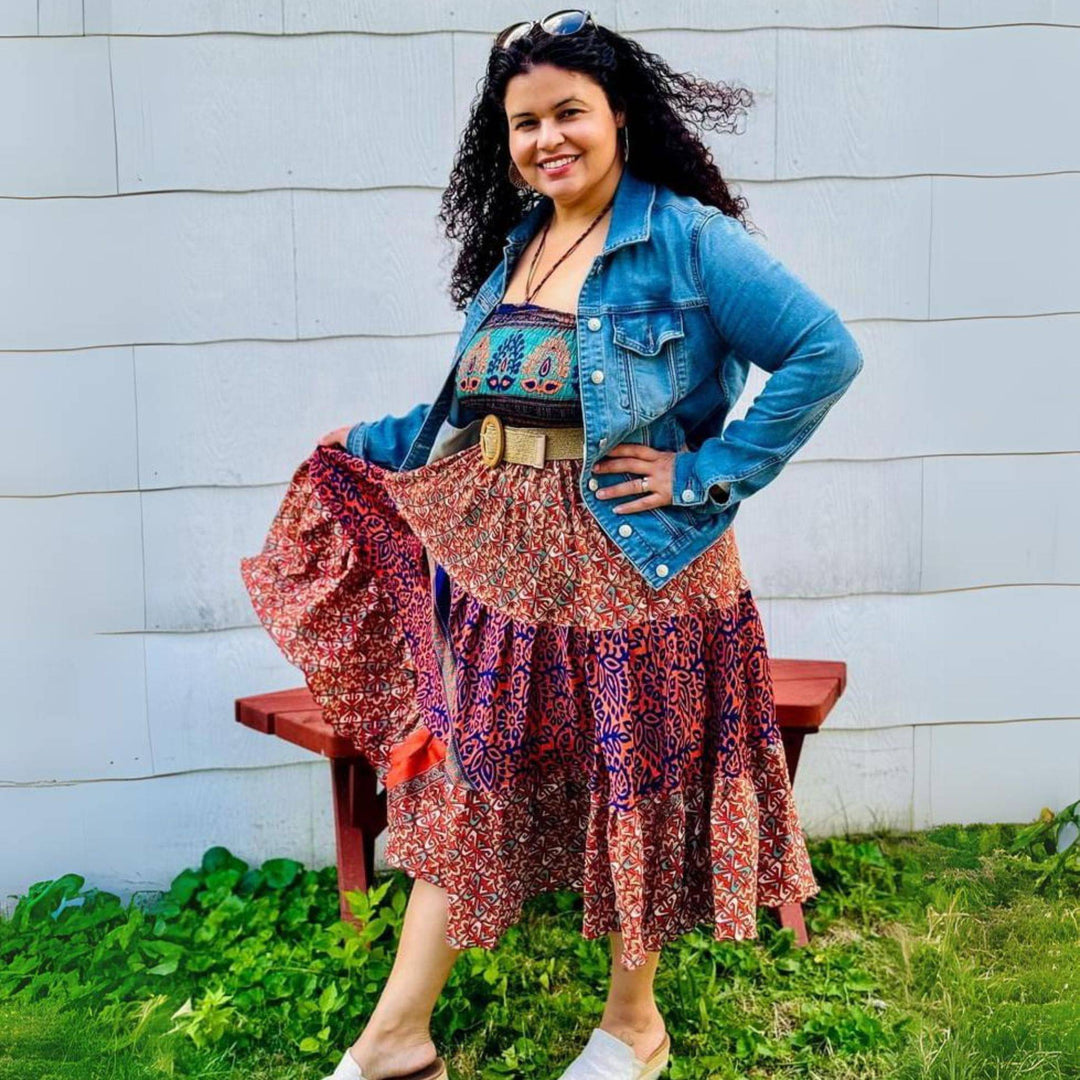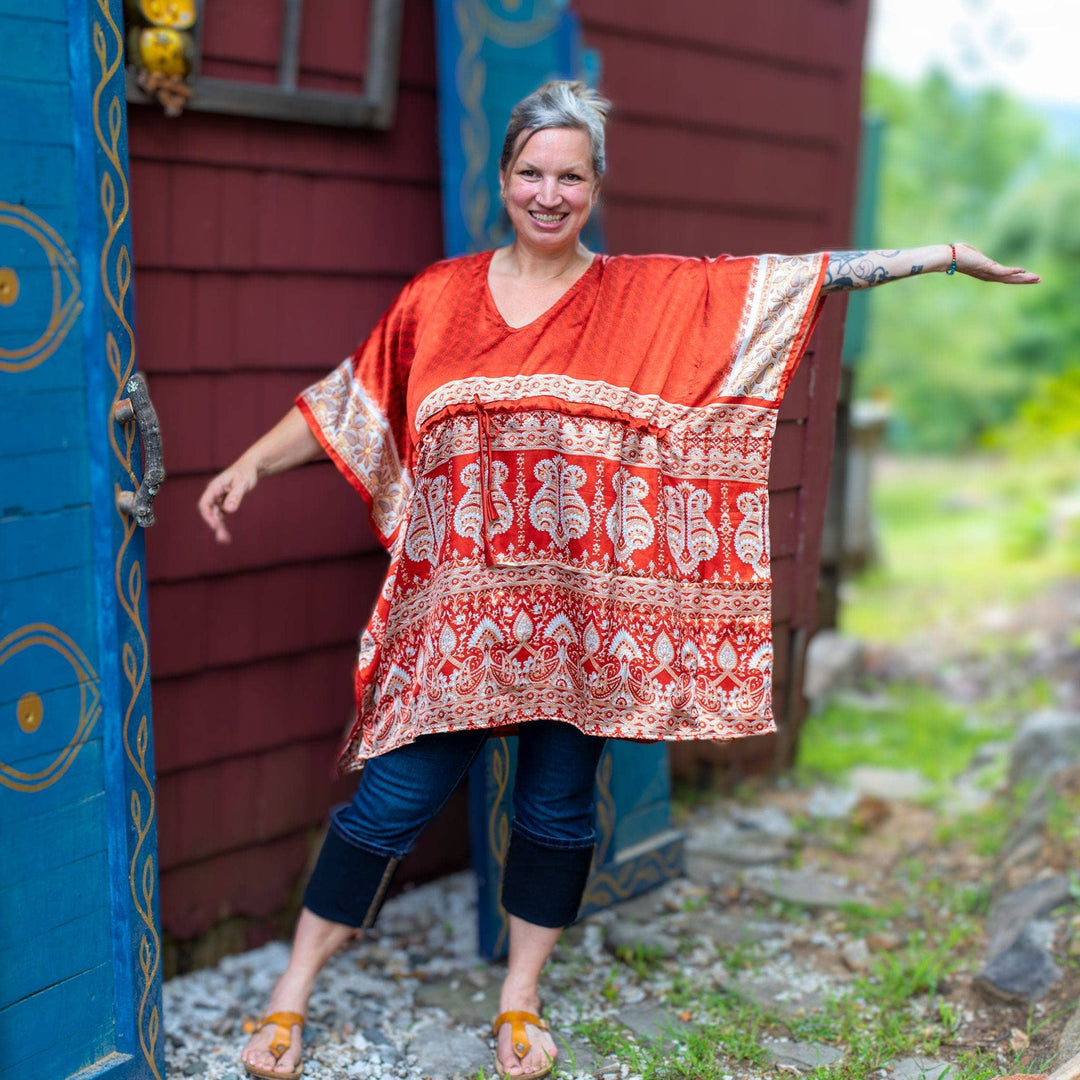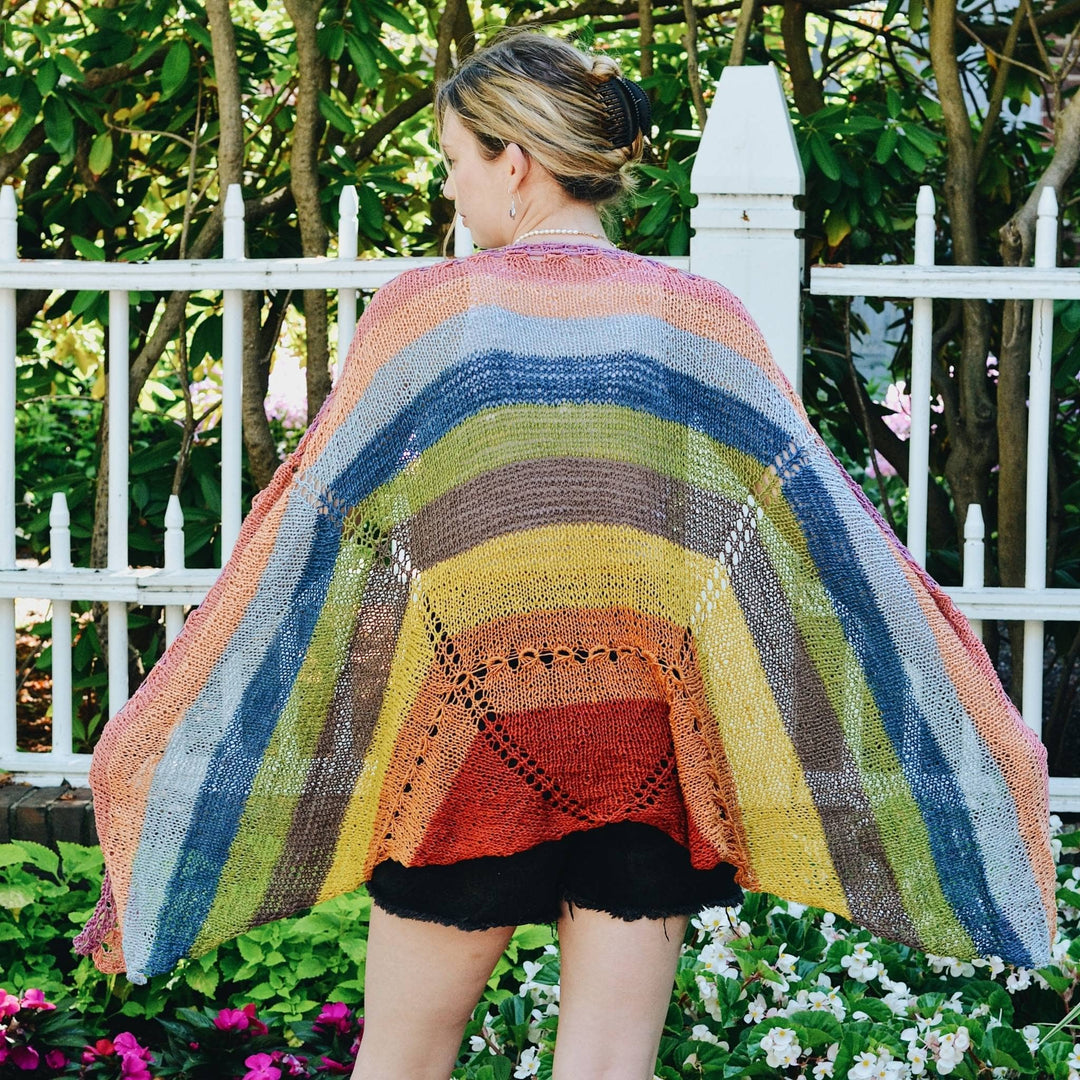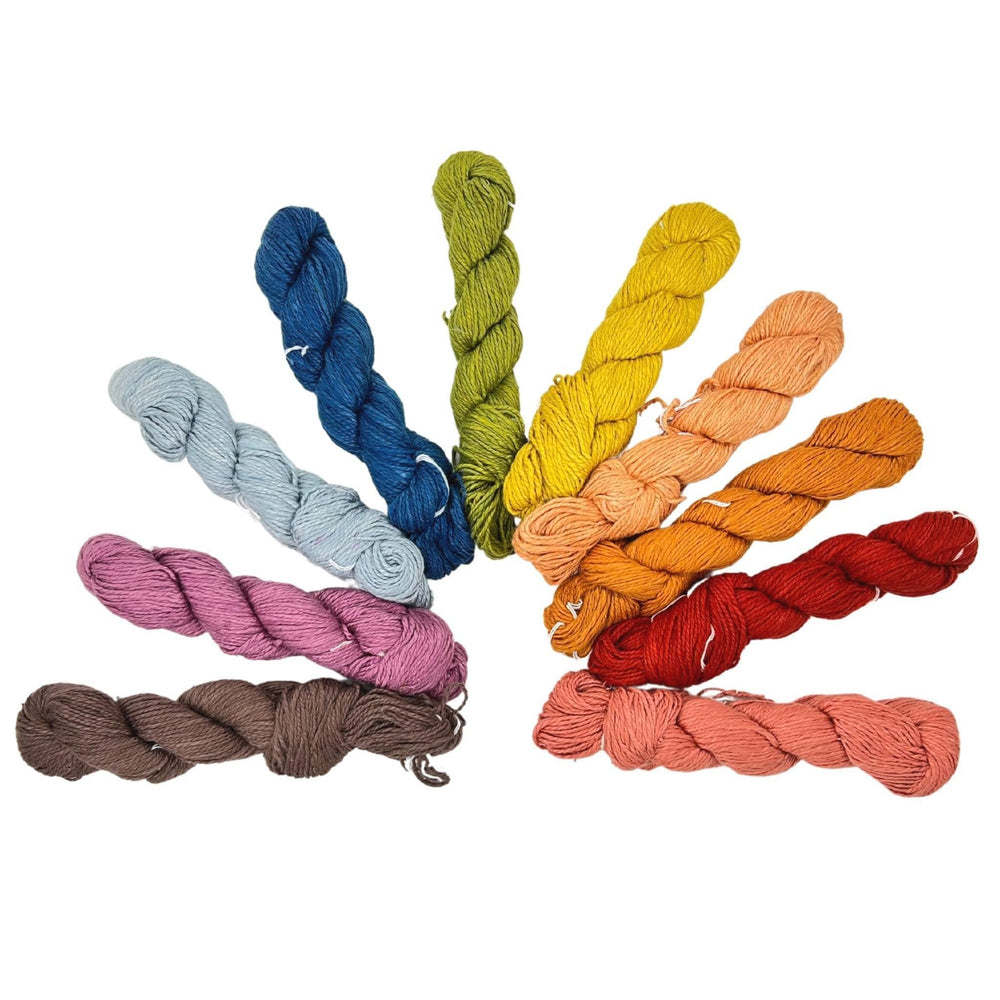Written by Alyssa Scott
What Does "Yarn Weight" Mean?
When people talk about yarn, you might often hear about different weights of yarn; this does not refer to how heavy each skein is but rather to the thickness of a single strand of yarn. Confusing right? Keep reading to unlock the mystery behind the different types of yarn weights and what they are each commonly used for!

Thread

The smallest weight is thread. Thread can be lovely when worked up into doilies, lace, or other items that tend to be decorative. While thread can be used in all sorts of crafts, people don’t tend to knit or crochet with thread as they do other weights of yarn. Special tools may be needed to work with thread weights such as special hook or needles, a bright light source, and magnifying tools.
Lace Weight

Moving one step thicker we land on lace weight yarn, which can also sometimes be referred to as fingering weight yarn. The dividing line between two different weights of yarn can be a little bit fuzzy at times (which is one of the reasons it’s so important to swatch). Lace weight yarns are quite versatile, but still are often used in making decorative items including lace and doilies. Lace or fingering weight yarns can also be used to create projects like accessories, home decor, other functional items, and even light warm weather garments! You can learn more about lace weight yarn here.
Sport Weight

Just above lace, we move into sport weight yarns. Contrary to what the name suggests, there is no extra exercise required to work with this weight of yarn. Sport weight yarns tend to have a gauge of around 5-6 sts per inch. Another name for this weight is baby, although its uses range wider than just baby items. Other than sweet bonnets for youngsters, sport weight yarns can be used for fine lace work including doilies, table cloths, accessories, and more!
DK Weight

Next on the list we’ll find DK weight yarns which are sometimes also called light worsted weight. This yarn usually achieves a gauge of 4-5 sts per inch. DK stands for “double knitting,” which does not refer to the double knitting technique but actually developed as shorthand to mean twice the thickness of fingering weight yarn. This weight of yarn is slightly thicker than those mentioned previously, which means the resulting projects will work up a bit faster as well as being more insulating. This makes DK weight yarn great for things like light hats, gloves, and shawls as well as super popular for garment making.
Worsted Weight

From there we move into the category of Worsted or Aran weight yarns. This weight of yarn is incredibly common as well as incredibly popular. Generally a worsted weight yarn would achieve a gauge of 3-4 sts per inch. Because this yarn is thicker than the weights discussed previously, the resulting fabric will be thicker when worked up. The thicker fabric lends itself nicely to cool weather garments such as sweaters. Worsted weights are also good for making blankets, hats, and scarves. Worsted weight yarns can also be used for stuffed animal projects, toys, baby items, and more! This weight of yarn is very versatile, there’s almost nothing you couldn’t do with worsted weight yarn!
Bulky Weight

Next we find ourselves examining bulky weight yarn, which can sometimes be called chunky weight yarn. It’s common for a bulky yarn to achieve a gauge of 3-3.5 sts per inch. This even thicker yarn is ideal for projects such as scarves, accessories, garments, and blankets. In fact, a blanket made of chunky weight yarn will work up faster than one made of worsted weight yarn. This makes bulky weight yarn a great choice for large projects, especially large cold weather projects!
Super Bulky Weight

Next up comes super bulky yarn. This weight of yarn will typically achieve a gauge of about 2-3 sts per inch. This weight of yarn works up in a flash because it’s so thick! You may have to search a little to find the tools in just the right size to work with this yarn. Super bulky weight yarn can be a great choice for projects such as blankets, baskets, home decor, cowls, accessories and more! It can be a little more difficult to weave in the ends of a super bulky yarn, and it’s more noticeable if the ends fall out of your project. One way to mitigate this is to use a splice join where possible when working with super bulky weight yarn.
Jumbo Weight

Last but certainly not least, we have Jumbo yarn. This yarn is even larger than any we talked about before clocking in with a gauge around 1-2 sts per inch. This weight of yarn tends to be ultra plush and super cozy. Sometimes roving will be considered a bulky weight yarn, but this classification can be a little bit misleading. Roving describes a collection of unspun fibers that are combed into long strands. Because a roving is not spun, it cannot be used as a yarn typically would be. Roving is generally a type of prepared fiber for the purpose of spinning the fiber into yarn. Fibers in this state are very loose, and tend to separate easily. Jumbo weight yarn would be a great option if you’d like to arm knit a blanket, while if you knit roving into a blanket it would shed and fall apart with minimal wear/washing. If you’re careful to select a jumbo weight yarn that’s not roving, then projects such as holiday gifts, scarves, home decor, and more become a breeze!
Get Crafting!
Every crafter tends to have a preference of the type of projects they like to make, as well as the yarn weights they like to use. As long as you’re working with a weight that feels right to you and your gauge is on point, then you’re set up for a successful and fun crafting experience!

Alyssa began working at Darn Good Yarn in the spring of 2021. She has been knitting and crocheting as a hobby since childhood. Alyssa graduated from SUNY Plattsburgh with a Bachelor of Arts in Political Science and Gender and Women’s Studies, with a minor in Social Justice
 Rewards
Rewards




















